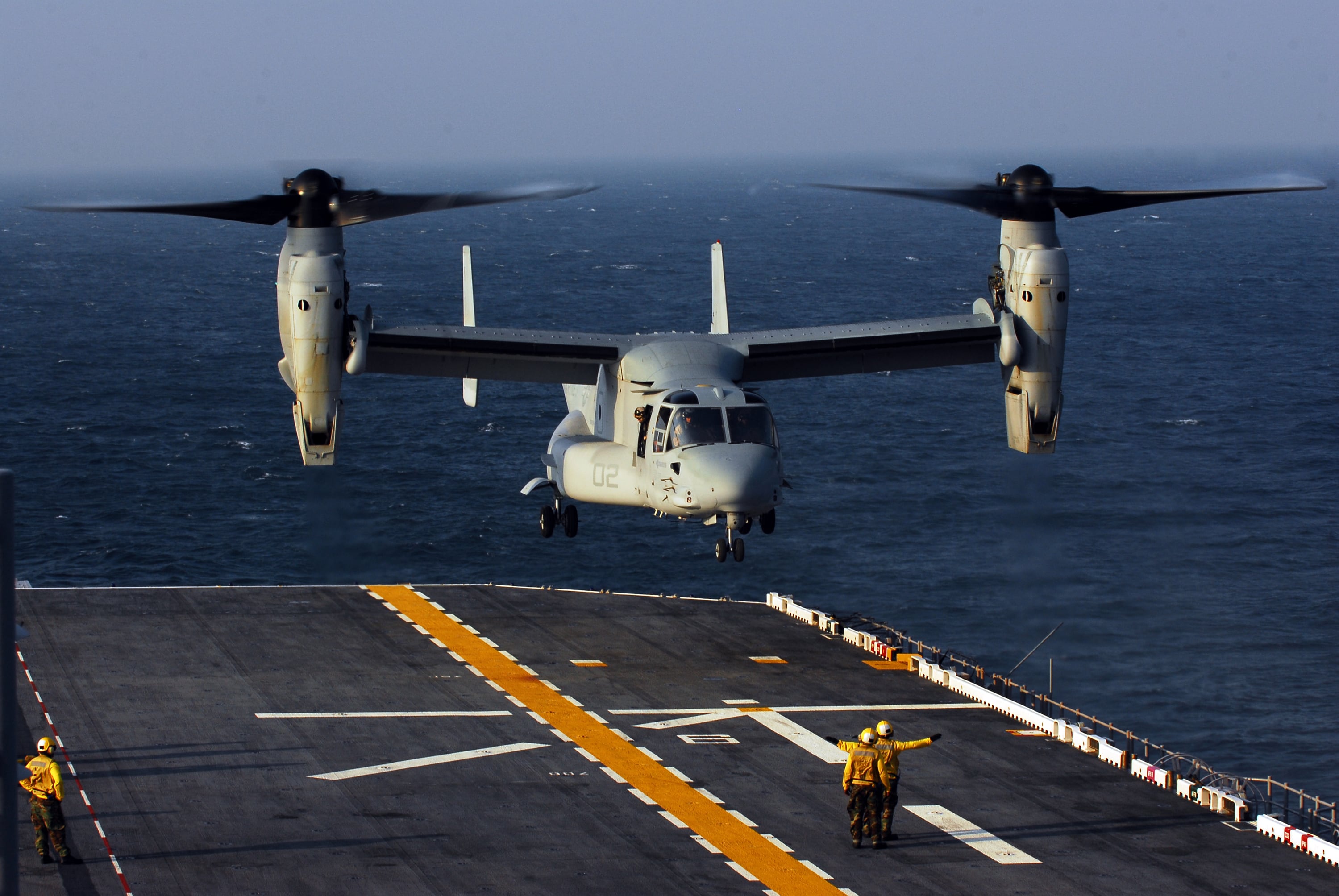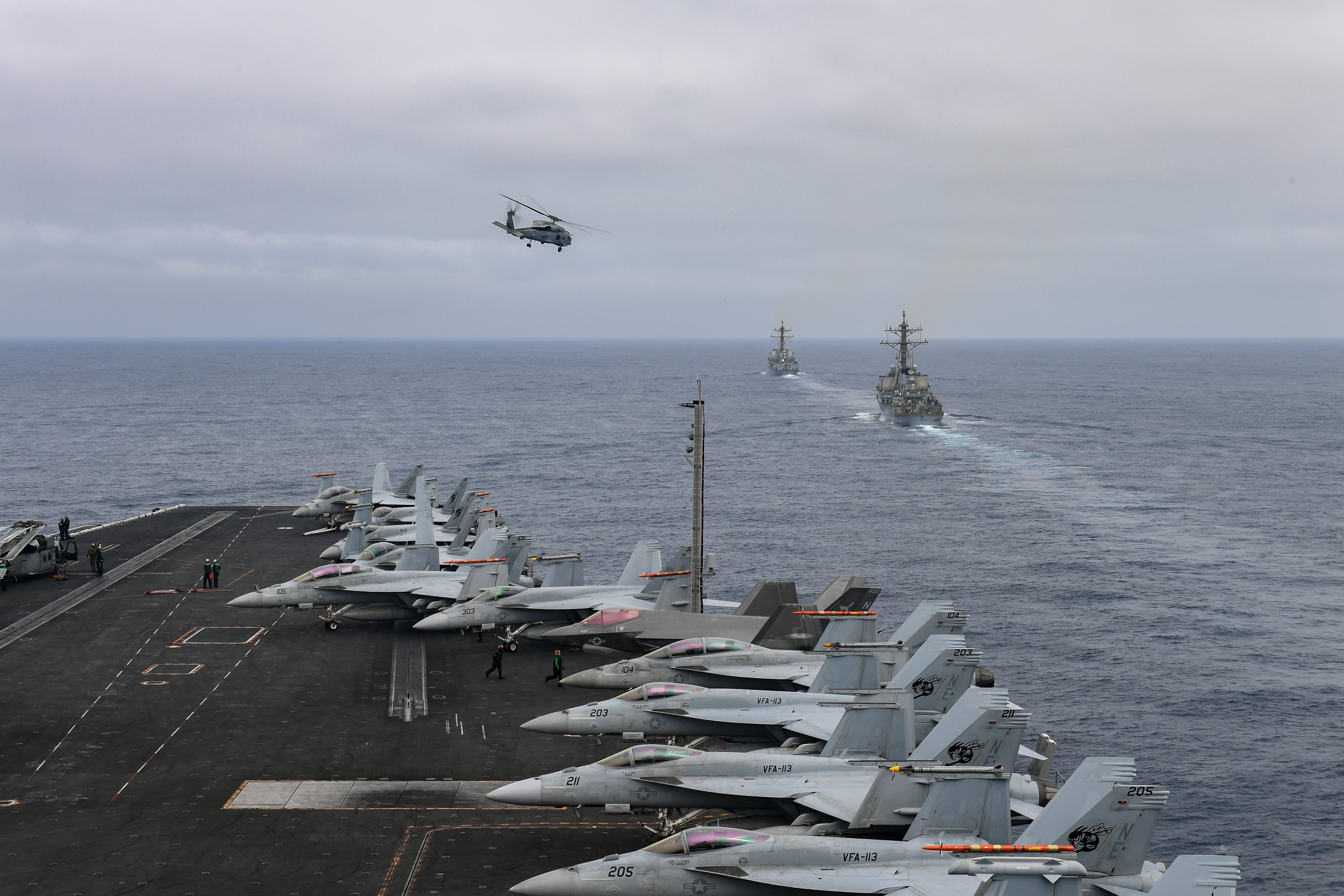While the military-wide grounding of the V-22 Osprey tiltrotor aircraft fleet this week is impacting operations across the services and raising fresh questions about the platform’s safety, Navy officials say they are mitigating the loss.
The grounding was ordered Wednesday following a fatal Air Force Osprey crash off Japan that killed eight Air Force members assigned to special operations units on Nov. 29.
While the aircraft has been in use by other services for years, the Navy only started to use the carrier-specific CMV-22 variant in 2021 to ferry people and supplies on and off deployed carriers.
Currently, the aircraft carrier Carl Vinson is the only deployed flattop having to deal with the loss of its Osprey assets, and the ship is making do, officials told Navy Times this week.
RELATED

“Within the strike group and the U.S. Navy, we operate with multiple logistic redundancies across all operational envelopes, making us adaptable and steadfast,” a spokesman for Vinson said in an email to Navy Times. “We extend our deepest sympathies to the families of our fallen airmen.”
The Vinson deployed from San Diego in October and is currently operating in the West Pacific.
A defense official who requested anonymity to discuss operations said the carrier has a multitude of other options available to replace the Osprey’s capabilities.
Those include a detachment of C-2A Greyhound aircraft stationed at Marine Corps Air Station Iwakuni, Japan.
Greyhounds have long been the Navy’s traditional means for flying people and supplies on and off carriers.
But Ospreys have a greater range, can carry more cargo and communicate farther than the Greyhounds, according to Naval Air Forces.
The Navy’s Ospreys also feature “increased survivability,” according to the command.
In addition, the carrier can use port calls and underway replenishments in place of the grounded Ospreys, the official said.
RELATED

“There’s a number of things they can leverage to get to and from the ship,” the official said.
Ospreys first deployed aboard a carrier for the Vinson’s last cruise, which began in 2021, as part of what the Navy calls the carrier “air wing of the future” that also includes next-generation F-35 fighter jets.
To date, West Coast-based carriers — including Vinson, Theodore Roosevelt and Abraham Lincoln — are the only ones equipped to deploy with Ospreys. The rest of the fleet continues to use the Greyhound for logistics flights.
Naval Air Forces called the Osprey “a critical component of a future air wing” in a statement to Navy Times this week.
“Naval Aviation remains focused on updating current capabilities, bringing new and advanced platforms on line, and complementing today’s warfighting competency with enhanced tactics and procedures for the high-end fight,” the command said. “Naval Aviation will continue to add new platforms and capabilities to its carrier air wings over the next decade—making our forces more lethal and survivable.”
Geoff is the managing editor of Military Times, but he still loves writing stories. He covered Iraq and Afghanistan extensively and was a reporter at the Chicago Tribune. He welcomes any and all kinds of tips at geoffz@militarytimes.com.





